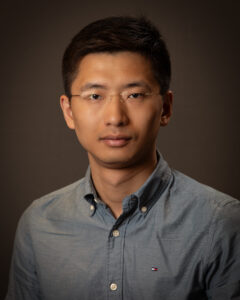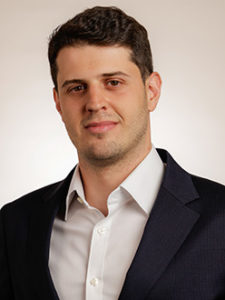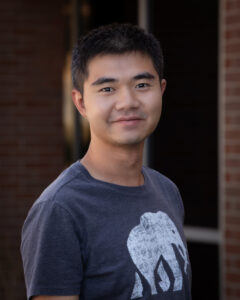Faculty and Labs


Tianli Feng
Lab – Feng MEX Lab
Our research is to push the frontiers of thermal energy transport, conversion, and storage in complex systems to extremes. Specifically, we target materials properties for ultra-high temperatures (1000-3000 °C), ultra-low temperatures (-270 °C), ultra-high thermal conductivity (2000 W/mK), ultra-low thermal conductivity (<0.01 W/mK), ultra-high power density, and ultra-fast energy transfer rate, from the atomic level to human scale. Our research methods include both advanced simulations and experiments, aiming for both fundamental sciences and cutting-edge technologies.

Xiaowei He
Lab – Flow Physics and Control
We are a group of people who like fluids, hands-on, and flight. Our research links flow physics, flow control applications, and experimental methods to solve challenges in aerospace, mechanical, and ocean engineering.

Jacob Hochhalter
Lab – Materials Prognosis from Integrated Modeling & Experiment (M’)
Researches emergent structural and material prognosis issues that involve the multiscale and stochastic nature of plasticity and fatigue cracking in structural materials. The research objective of the group is to leverage the ever-increasing capabilities in experimental observation and data analysis tools to provide new capabilities for prognosing reliability of advanced engineered structures and materials.
Alex Novoselov
Lab – Numerical Turbulence, Energy, and Reactions Group
The Numerical Turbulence, Energy, and Reactions lab focuses on making an impact against climate change through the computational study of flow and energy. Currently, we specialize in using high-fidelity simulations to better understand turbulent reacting flows in practical devices. When our tools reach the limits of what they can simulate, we develop new, state-of-the-art models to overcome these restrictions and continue our studies.
Shuaihang Pan
Lab – Lab of Advanced Manufacturing (LoAM)
Research interests include advanced (non-traditional) manufacturing, additive manufacturing, metal and alloy design, and materials’ degradation protection from a multiscale angle.
Robert G. Parker
Lab – Dynamics & Vibrations
Pursues research that merges academic investigations suitable for publication in leading journals with practical applications. While our primary goal is to pursue research valuable for the broad vibration research community, we select projects that are drawn from engineering applications. We pursue these goals while giving PhD and MS students in the lab academically exciting projects for them to develop their independent research skills and prepare for their future careers.
Ashley Spear
Lab – Multiscale Mechanics & Materials
Conducts cutting-edge research at the nexus of materials and structures. We couple materials characterization with high-performance computing and data-driven analysis (including machine learning) to address a wide range of research topics that are especially pertinent to the defense, aerospace, and manufacturing communities.



